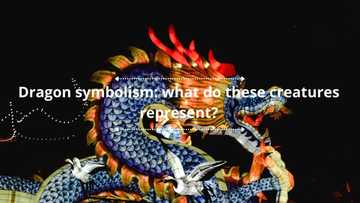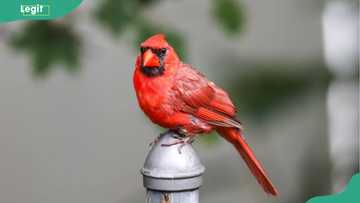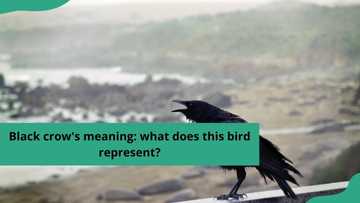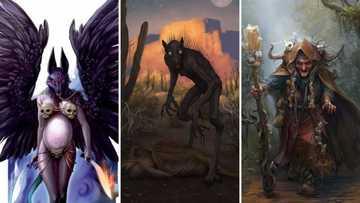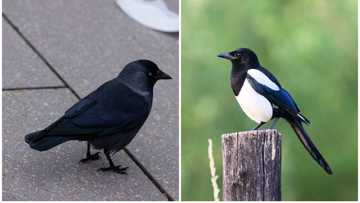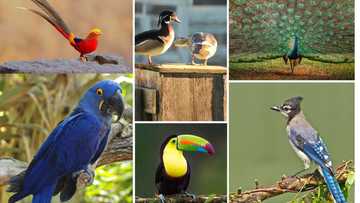Bird symbolism: 10 common birds and their spiritual meaning
Birds are widely regarded as symbols of freedom and eternity due to their ability to soar into the skies. Their symbolism exists all over the world as part of different cultures, religions, and traditions. Every bird is uniquely breathtaking and symbolizes certain aspects of our lives, nature, and the unknown world. David Bird, an emeritus professor of Wildlife Biology at McGill University, blends scientific and cultural interpretations of bird symbolism.
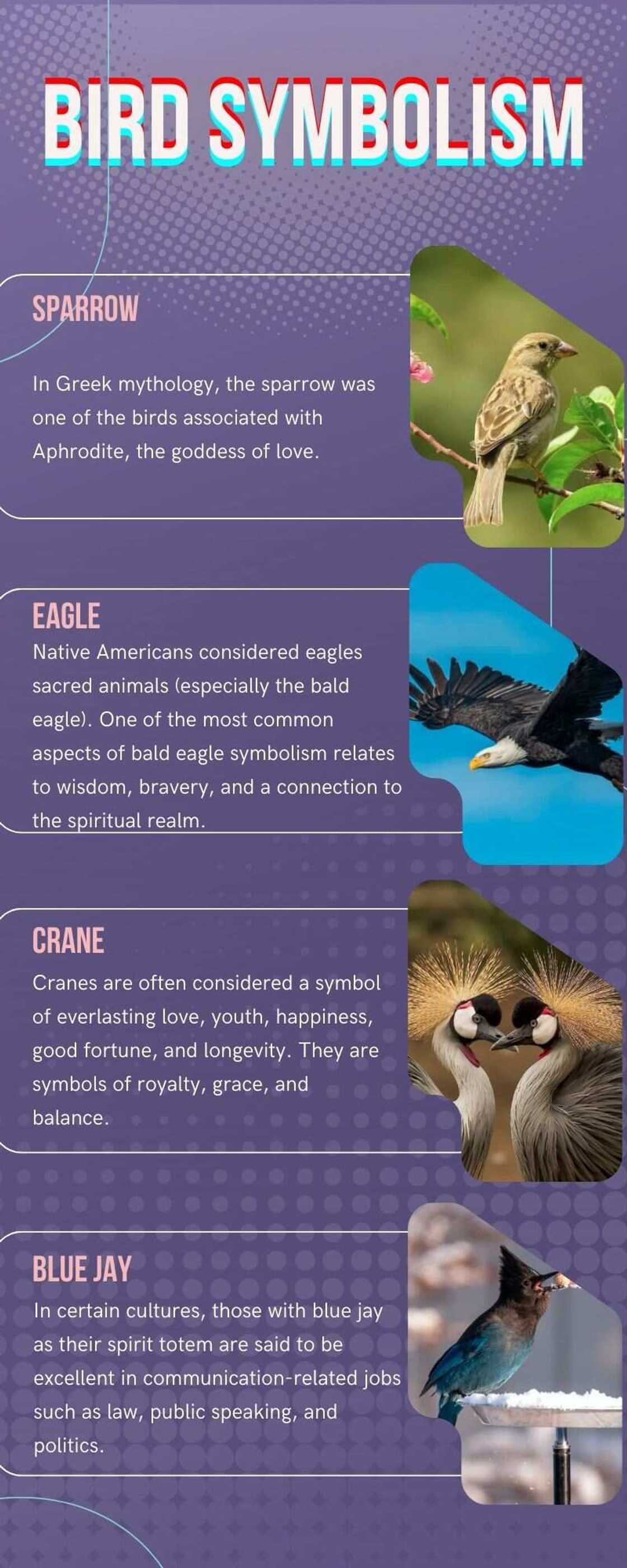
Source: UGC
TABLE OF CONTENTS
- Key takeaways
- Common elements of bird symbolism
- Significance of birds in spiritual traditions worldwide
- Observing birds as spiritual signs or messages
- Common misconceptions about bird symbolism
- What does a bird symbolize?
- What do birds symbolize in the Bible?
- What do birds symbolize in culture?
- What do birds symbolize in art?
- What do birds symbolize in love?
- What bird has a partner for life?
- Which bird is a symbol of good luck and new life?
Key takeaways
- Bird symbolism reflects freedom, hope, wisdom, and transformation.
- It varies across cultures, highlighting divine messages and nature's mystical power.
Common elements of bird symbolism
Here is a look at birds' spiritual meanings in folklore, native cultures, and modern beliefs.
1. Sparrow
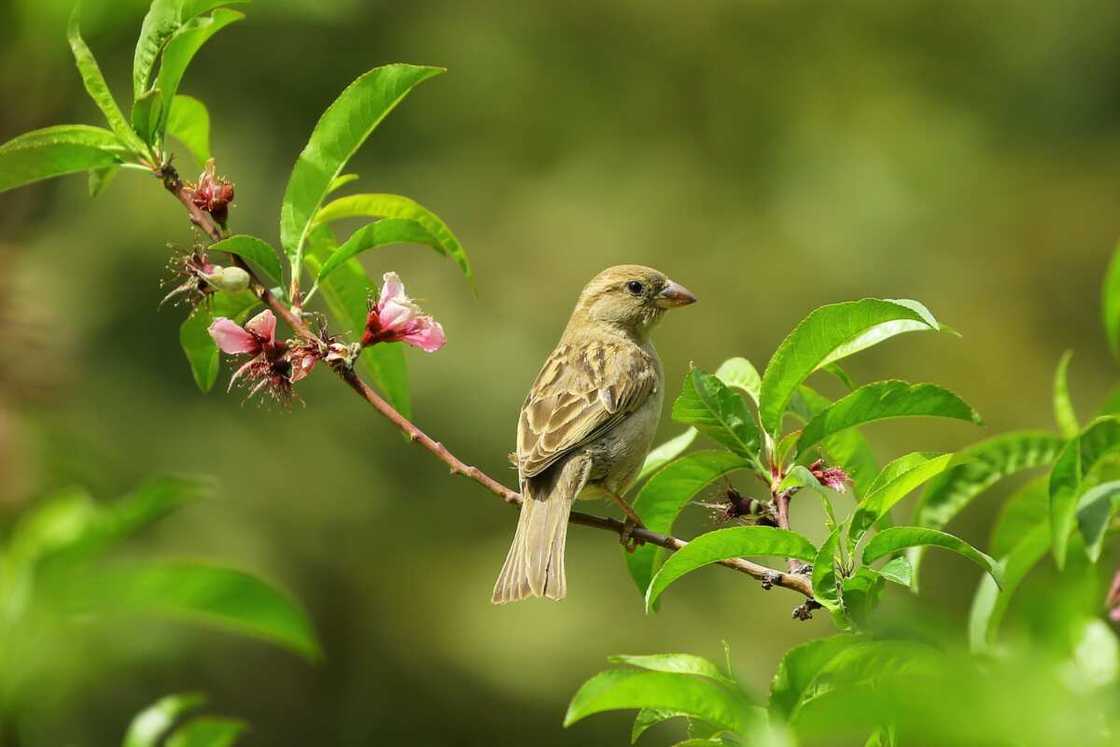
Source: UGC
The sparrow is one of the most common birds in the world. The most widespread species in the world is the house sparrow. These little creatures can be found in Africa, Asia, Europe, Australia, and the Americas.
Sparrow symbolism
Here is a look at some of the beliefs associated with sparrows.
- Greek mythology
Symbol of love: In Greek mythology, the sparrow was one of the birds associated with Aphrodite, the goddess of love. The sparrow symbolizes the spiritual connection found in true love. Ironically, the salt marsh sparrow on the east coast of the U.S. is widely regarded in science as the most promiscuous bird in the entire world; 95 percent of the females mate with more than one male in the breeding season.
- European folklore
In native European folklore, it is a bad omen if a sparrow flies into someone's house. This is considered a sign of impending death. In Kent, a person who caught a sparrow had to kill it to prevent their parents' death.
- Egyptian mythology
Ancient Egyptians considered sparrows as soul catchers. The birds were said to carry the souls of deceased people to heaven. It was a common practice for sailors to tattoo themselves with sparrow images to ensure their safe passage to heaven in case they died at sea.
- Indonesian folklore
In Indonesian folklore, a sparrow flying into someone's home symbolizes good luck. If the bird built a nest in the home, it meant that a wedding would happen in the home soon.
2. Eagle
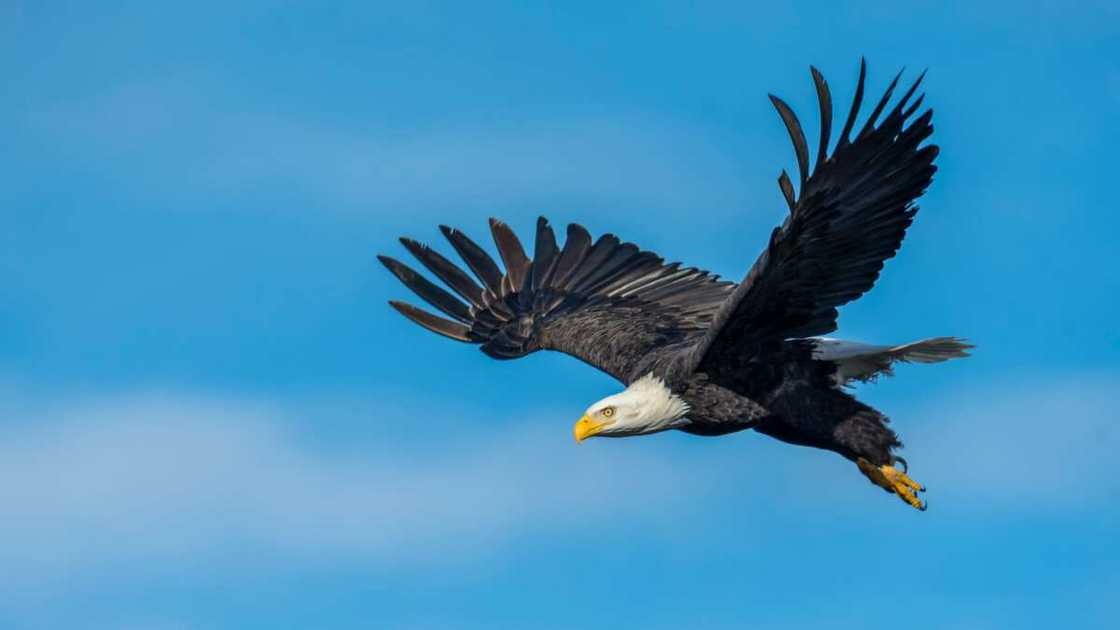
Source: UGC
Eagles are arguably some of the most commonly used animals in ancient and modern symbolism. The eagle generally represents strength, freedom, and wisdom.
There are ancient artifacts, stone carvings, and sculptures that indicate the power of this animal when it comes to symbolic meaning.
Eagle symbolism
Here is a look at some of the meanings associated with this powerful bird.
- Native America
Native Americans considered eagles sacred animals (both the golden and bald eagles). One of the most common aspects of eagle symbolism relates to wisdom, bravery, and a connection to the spiritual realm. Even in today’s modern world, the Hopi tribes still apply for permits to take eaglets from golden eagle nests for sacrificial purposes in their religion.
Eagle feathers are still highly coveted by native tribes for ceremonial purposes. Today, numerous sculptures, statues, and carvings of eagles can be found throughout the Americas.
- Native Celts
In native Celtic culture, eagles were closely associated with three gods. Since the Celts considered trees sacred, any animal that lived in or on trees was equally considered sacred.
- Mayan culture
In Mayan culture, the eagle is one of the Zodiac signs. It represents human beings who value freedom and can never be tied to a single place or person. These people possess limitless creativity and imagination.
- Ancient Egypt
In ancient Egypt, the eagle was a symbol of wisdom because it flew higher than people and was, therefore, able to see the world from a far wider perspective than humans did.
3. Crane
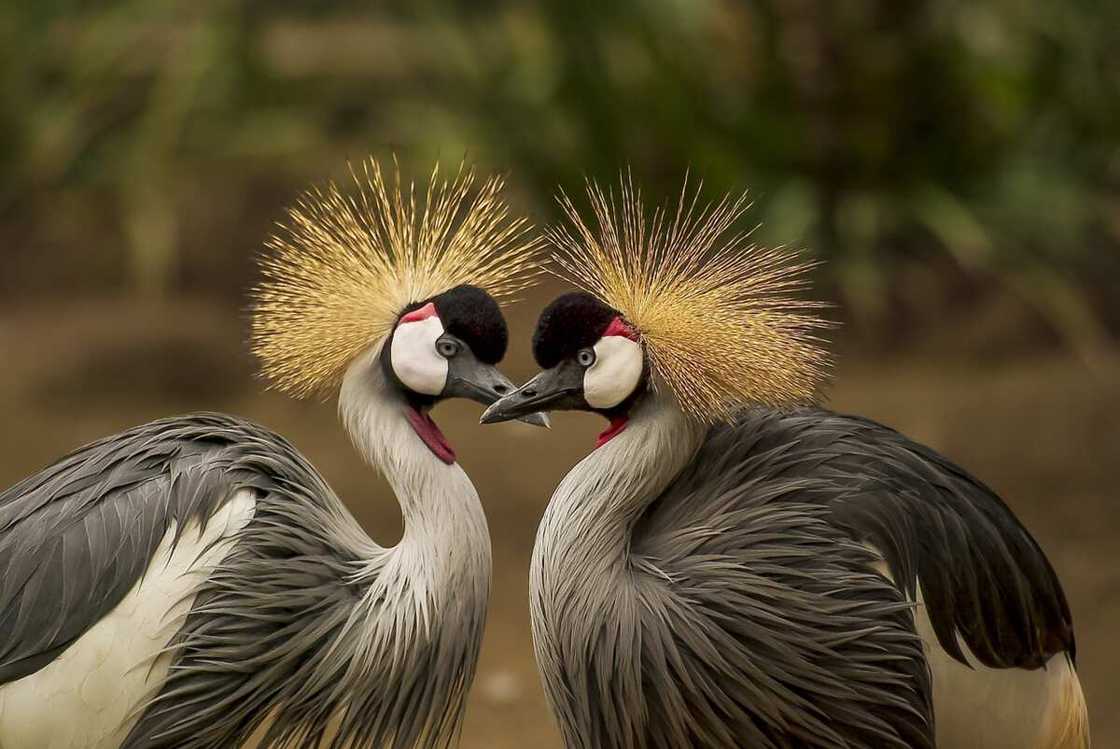
Source: UGC
Cranes are graceful, elegant, and beautiful birds, easily recognizable by their long legs and necks. They can be found on all continents except Antarctica and South America.
The birds are widely known for being easily adaptable to different climatic conditions. They are both plant-eaters and carnivores, which adds to their ability to survive in different regions.
Crane symbolism
The crane's beauty has often captivated people throughout the world. The bird's symbolism is particularly prevalent in North America, Korea, China, and Japan.
- Eternal love and loyalty
Cranes are often considered a symbol of everlasting love, youth, happiness, good fortune, and longevity. They are symbols of royalty, grace, and balance.
Additionally, these birds symbolize eternal loyalty. It is widely believed that every crane sticks to a single mate throughout its lifetime, making the species one of the most faithful in the bird world.
- Balance
Some of the best photographs of cranes involve one or more standing on one leg. The birds can strike this pose effortlessly despite their significantly heavy upper bodies.
This habit symbolizes the ability to go through life without rushing into poorly thought-out decisions that could endanger one's balance.
- Focus and spirituality
In some cultures, the crane is associated with the ability to focus on one goal without getting distracted by other issues on the side. It also symbolizes the need to develop one's spirituality.
4. Blue jay
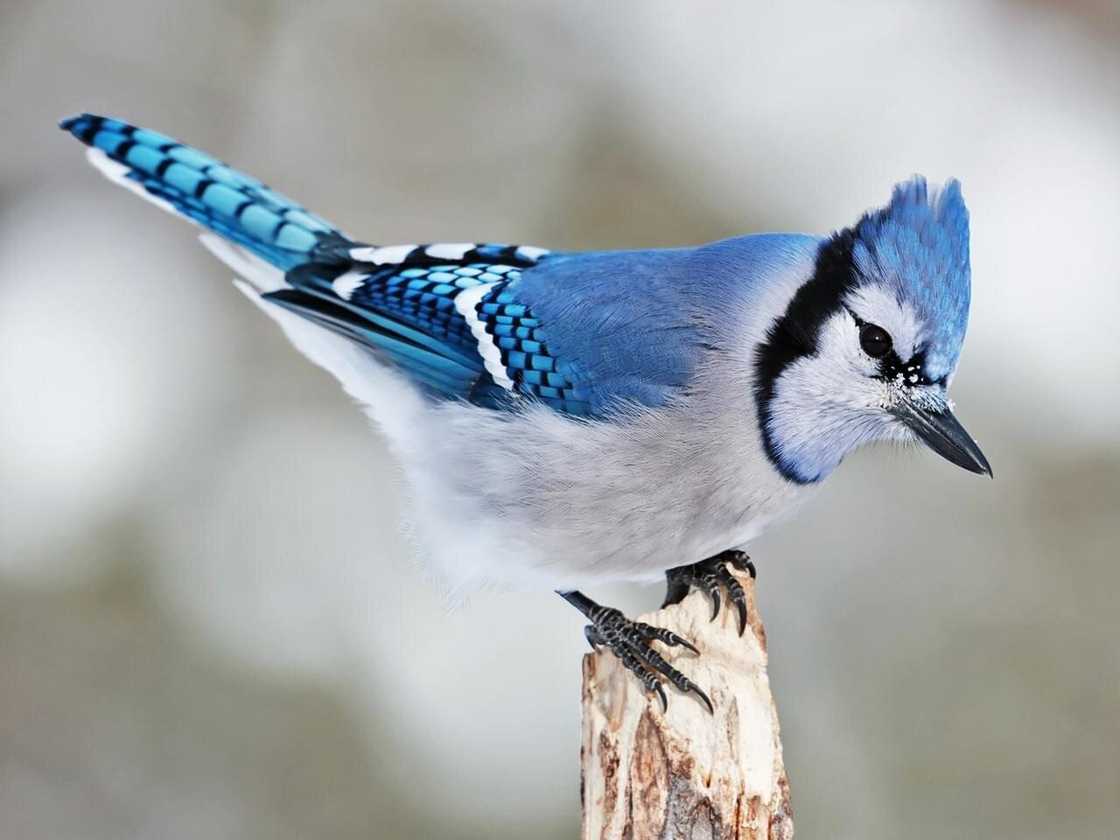
Source: UGC
The blue jay is a little stern bird native to North America. The bird is renowned for its tenacity and determination. It is especially relentless when dealing with its enemies.
Blue jay symbolism
Here are some of the traits associated with the blue jay.
- Intelligence
As a member of the corvid family, the blue jay is known for its patience and intelligence. There is at least one captive blue jay who often uses strips of materials like newspaper as tools to pull food into its cage.
There is at least one film-documented instance of a wild blue jay using a twig to extract spiders from their hiding places. These clever birds can mimic hawk calls to scare off competitors for food. They also peck at and store paint flakes and mortar for later consumption to gain minerals in their diet.
Spiritually, the bird is thought to give knowledge and memories of long-forgotten things and provide intelligence on how to use them to seize opportunities.
- Aggression
This bird is very aggressive, and it makes various loud sounds that travel long distances. In some cultures, having a blue jay as your totem implies that you are aggressive; therefore, nothing can stop you from defending what you consider right.
- Flexibility and communication
The blue jay also symbolizes the ability to use any situation to one's benefit. This comes from the bird's ability to build nests in any tree or environment that suits it.
In certain cultures, those with blue jay as their spirit totem are said to be excellent in communication-related jobs such as law, public speaking, and politics.
5. Heron
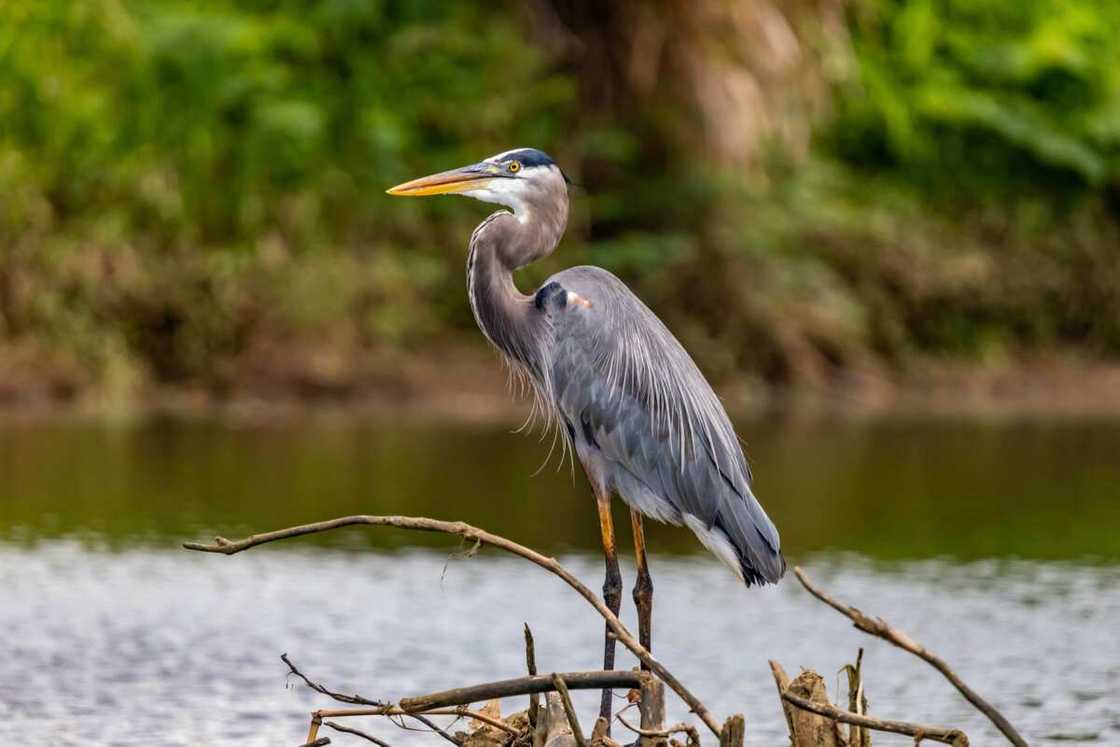
Source: UGC
Herons are coastal and freshwater birds commonly found all over the world. These birds closely resemble cranes, spoonbills, ibises, and storks. However, herons have distinctive retracted necks, while the rest have outstretched ones.
Heron symbolism
Here is a look at the symbolism involving herons in different cultures.
- Native America
Certain Native American tribes associated herons with good luck. Fishermen believed the sighting of a heron would bring a successful fishing trip. The bird is also associated with wisdom, determination, and curiosity.
- Native Japanese culture
White and grey herons can be seen in numerous ancient Japanese paintings. Some ancient legends suggest that lovestruck girls would often transform into heron spirits to dance on frozen ponds in winter.
In another popular Japanese legend, a prince died and turned into a white heron. In Japanese culture, the heron is said to represent purity, nobility, and grace. The bird is also widely considered to symbolize divinity.
- Chinese symbolism
Herons appear in numerous Chinese bird symbol paintings, representing the 'upward path.' In China, the image of a white heron stands for a path to heaven. In the country's folklore, it was the responsibility of herons to carry the souls of the deceased to heaven.
- Ancient Egypt
In Egypt, the heron was considered God's messenger, as well as the creator of light. The bird was also a symbol of prosperity, regeneration, spring, dawn, and longevity.
- Christianity
Herons are closely associated with the suffering of Jesus Christ since it is said that the birds can shed tears. The bird is also known to symbolize patience and contentment. It is also termed unclean, meaning that it is not suitable for consumption.
6. Nightingale
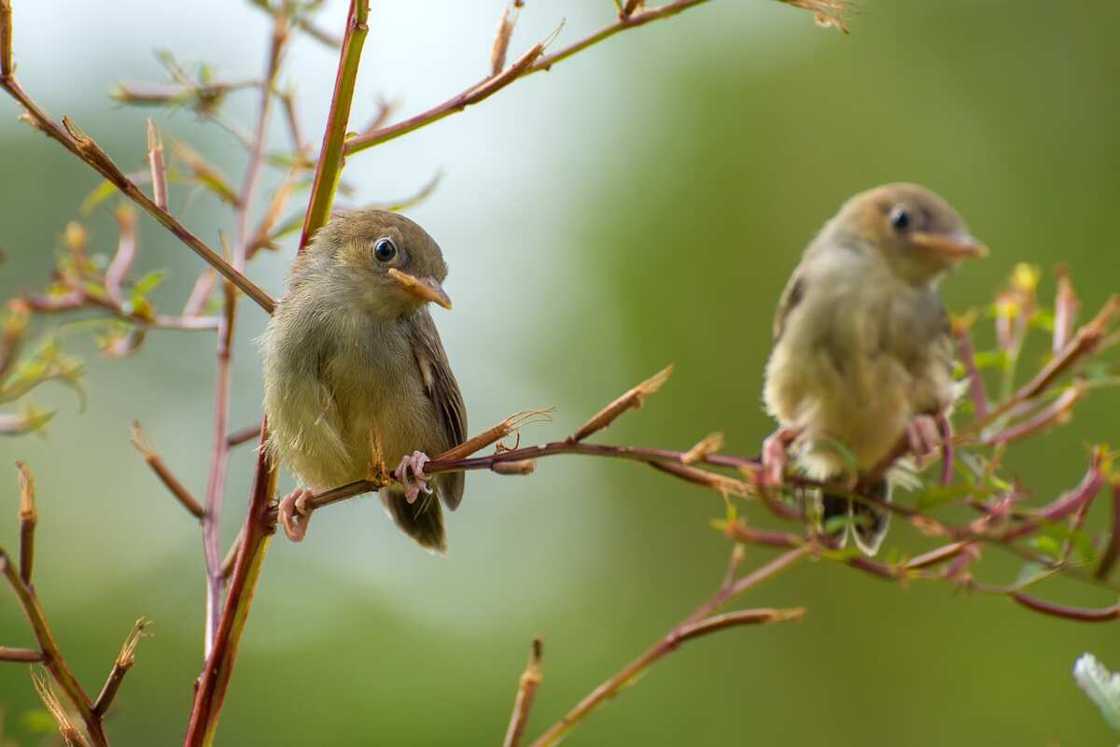
Source: UGC
The nightingale is a small passerine bird best known for its powerful and beautiful song. Nightingales are good at hiding their efforts, making everything they do seem easy, even if, in reality, they took a lot of effort.
Nightingale symbolism
Here are some cultures in which the nightingale holds significant meaning.
- Celtic culture
Nightingales are grouped with other songbirds whose melodic voices are considered to be vehicles for prayers to reach the celestial planes.
- Nightingales in dreams
In some spiritual practices and beliefs, when a person sees nightingales in their dreams, it means that they need to evaluate their current state.
- Nightingale folklore and mythology
Some myths suggest that in ancient days, eating a nightingale's head caused one to gain talent and inspiration in the arts. While this is an outdated belief, it still speaks a lot about how the nightingale came to personify artistry.
7. Robin
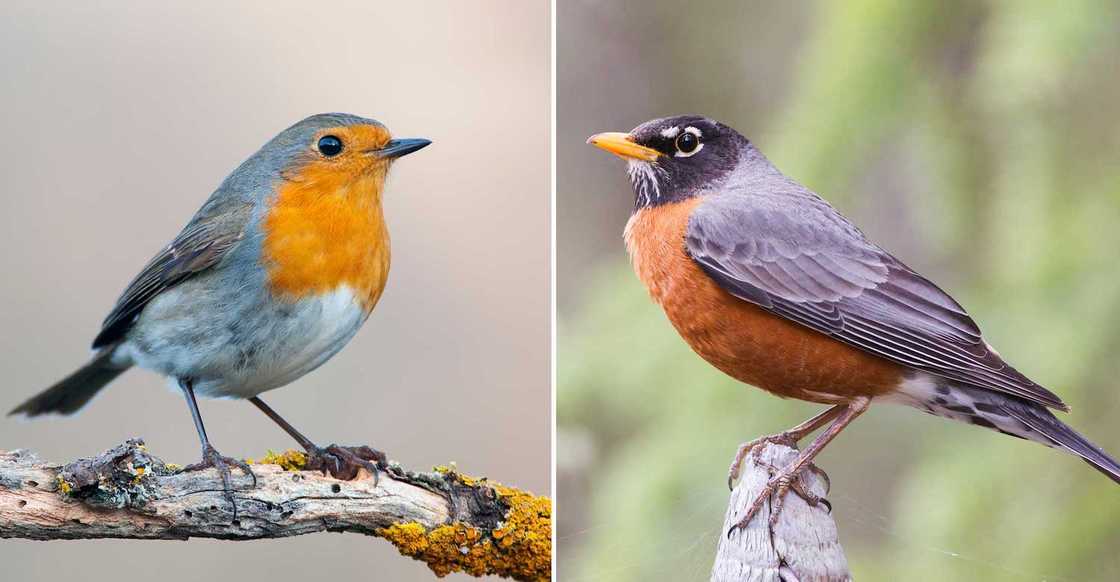
Source: UGC
Robins are widely regarded as the quintessential early birds. American robins, a type of thrush species, are a common sight in North America, often seen pulling earthworms off the ground.
The robin is known for its end-of-winter appearance, cheery songs, and orange-colored chest. The much smaller European robin belongs to the tit family which consumes mostly beetles and ants but adds seeds and berries to their diet in winter. They are well known to be exceptional melodic singers.
While both of these birds are a common sight in cities and towns, they are also at home in grasslands, forests, and mountains.
Robin symbolism
Here is a look at the myths, legends, and beliefs associated with robins.
- Ancient Europe
Ancient Europeans considered the robin a symbol of divine sacrifice and rebirth. The bird was associated with springtime and the coming of a new year. The robin brought happiness, change, wisdom, and happy songs.
- Ancient Christianity
Several ancient Christian paintings depict the robin as Christ's helper. It is said that the robin tried to pull off the thorns on Jesus' Crown of Thorns. However, the bird only ended up getting feathers torn from its body.
- Parenting, care, and growth
The robin is the ultimate symbol of nurturing young ones into adulthood. Robins are widely considered to be some of the best parents among all bird species. Seeing a robin is, therefore, associated with new growth in some cultures.
- Hinduism
In Hinduism, the red color on a robin's chest is said to symbolize a person's kundalini (a serpent-like force at the base of a human's spine). When one experiences inner spiritual growth, their kundalini uncoils and moves upwards as the person's enlightenment and awareness increase.
8. Cardinal bird
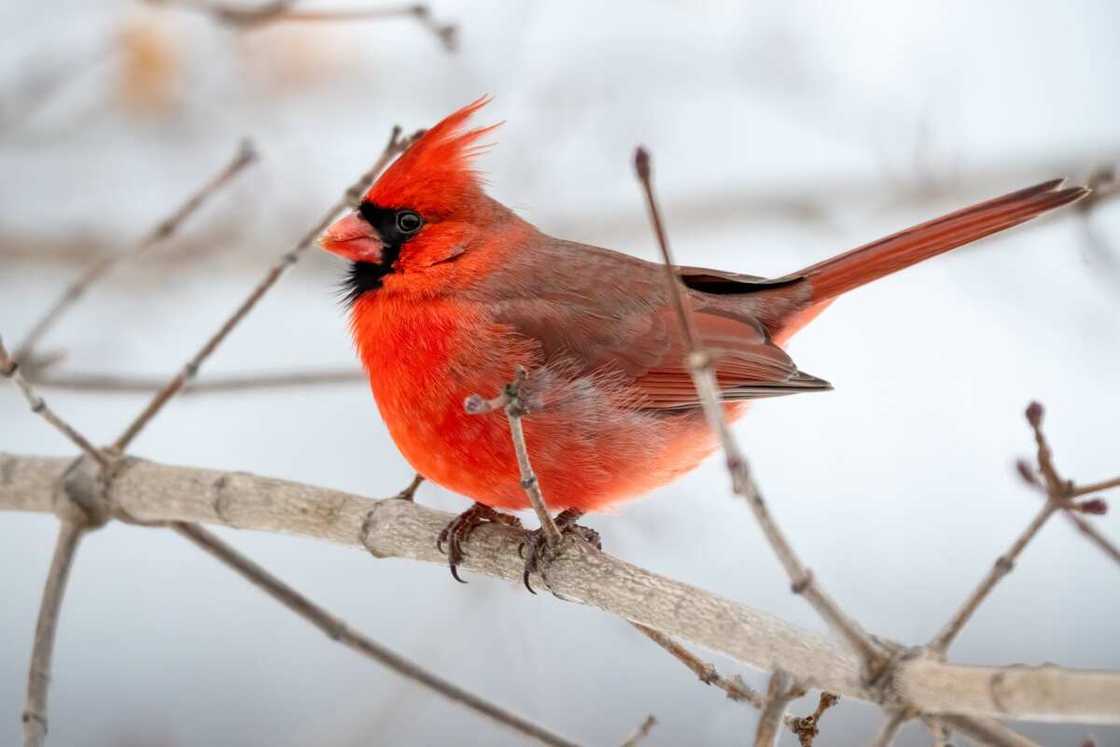
Source: UGC
The northern cardinal, commonly known as the cardinal, is a fairly large, long-tailed songbird with a short, very thick bill, and a prominent crest. Cardinals often sit with a hunched-over posture and a tail pointed straight down.
Cardinal bird symbolism
Here is a look into the symbolism associated with cardinals.
- Native America
Among Native Americans, the cardinal has strong ties to other realms and, as such, acts as a messenger from the ancestors. The southeastern tribesmen associated cardinals with the sun as well as with good fortune. The bright red male cardinal reminded early European settlers of the cardinals in the Roman Catholic church, hence the name given to it.
9. Woodpecker
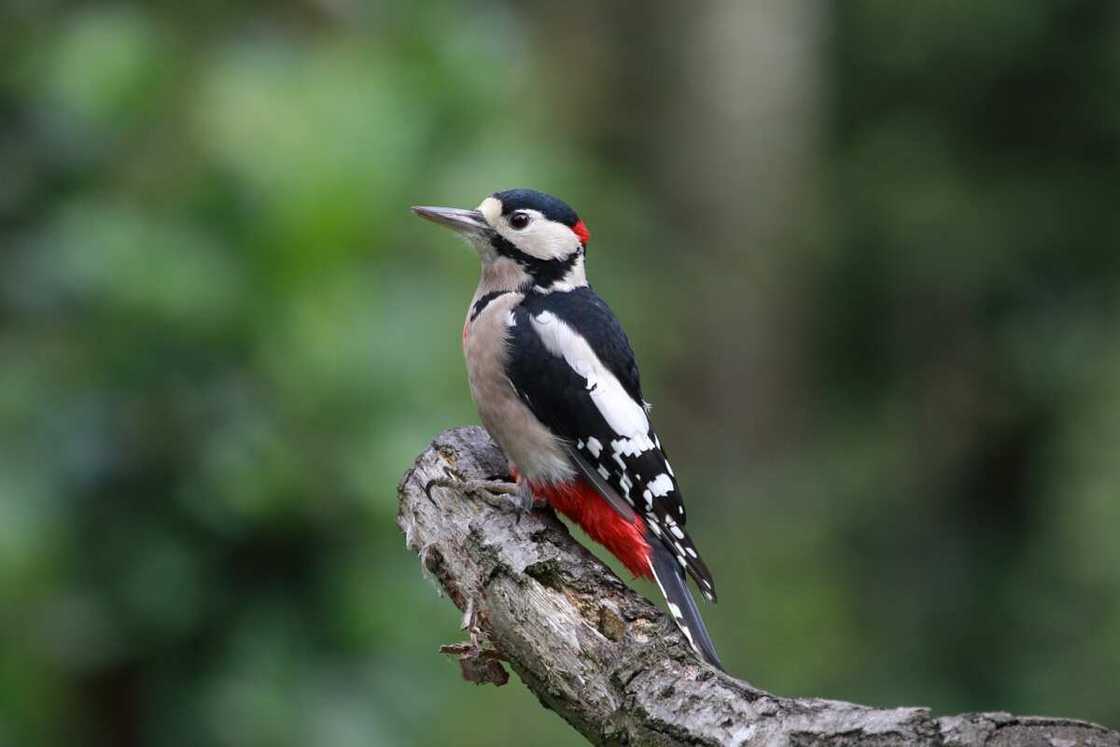
Source: UGC
The woodpecker is renowned for probing insects on tree bark and chiseling holes to nest inside tree trunks, dead or alive. Woodpeckers are fairly common all over the world except in Australia and New Guinea.
Woodpecker symbolism
Here are some of the cultures, religions, and beliefs in which the woodpecker appears.
- Hinduism
The red color on the woodpecker is associated with the root chakra, the prime and protective energy of a human. The bird symbolizes a person's core impulses and basic beliefs.
- Native North America
Native North Americans recognized the woodpecker's home-making traits and thus associated the bird with protection. Additionally, the bird's beak drumming was taken to symbolize the beginning of ceremonies, processions, and, in some cases, war.
- Roman mythology
In Roman mythology, the woodpecker is associated with Mars, the planet of energy and initiative. The zodiac sign of Aries is also closely associated with the woodpecker as a totem animal because of its association with the planet Mars.
The woodpecker is said to have befriended Remus and Romulus, the two founders of Rome. Legend has it that a woodpecker and a wolf fed the young twins whose father was Mars, the God of war.
10. Albatross

Source: UGC
Albatrosses are fascinating birds known for their large wingspans and the ability to ride winds for hours without flapping their feathers. The albatross has a rich mythological and cultural history that persists to the modern day.
Albatross symbolism
Here are several beliefs associated with the albatross.
- Ancient sailors
Sailors all over the world viewed sightings of an albatross as good luck. Its injury, capture, or death was seen as a terrible omen to those at sea.
Additionally, the albatross symbolizes grace. It was said to guide humans in using their bodies to move fluidly through life, even in conditions that often seemed treacherous to their well-being.
Significance of birds in spiritual traditions worldwide
David Bird, an emeritus professor of Wildlife Biology at McGill University, explained in an interview that birds do hold varied spiritual meanings across cultures and religions.
According to Professor David, he said:
Canada is home to over a million First Nations people, comprising over 600 tribes. Many of them worship totems that include ravens, eagles, owls, etc. which have very different spiritual meanings to various tribes.
For instance, the owl is often seen as a symbol of wisdom. However, Professor David clarifies:
The studies that rank intelligence in birds do not place owls anywhere near the top of the list, but somewhere around the middle. They're not known to be stupid birds, but they're certainly not the wisest birds.
In his opinion, the wisest birds in the world would be members of the corvid family, which includes the crows, ravens, and jays.
Observing birds as spiritual signs or messages
Professor David said the connection between birds and spirituality often depends on individual beliefs. He explained:
For example, some people believe that doves might symbolize renewal, hope, or peace. The famous analogy of hawks and doves in the military associates people who engage in war as hawks and those who want peace as doves, further solidifying certain cultural perceptions.
He also shares a well-known Biblical anecdote about Noah and a dove; he said:
During the great flood on the Earth, Noah wanted to find out if the waters were receding, so he sent forth a dove. When the dove returned with an olive leaf in its beak, it signified that the waters were going down, offering hope in a dire situation.
Common misconceptions about bird symbolism
Bird symbolism is often romanticized or misunderstood. Professor David sheds light on several misconceptions, such as:
- Ravens and crows
The ravens and crows have been studied extensively and are perhaps the world's most intelligent birds. They're right at the top of any scale you might use for intelligence. They're very adaptable birds and have a very omnivorous diet. Not everyone likes seeing ravens and crows for various reasons.
Crows gang together sometimes to attack and kill doves for food. Ravens, crows, and jays are well-known raiders of eggs and nestlings in other birds’ nests. And perhaps some folks associate them with death.
In the famous poem by Edgar Allan Poe, he looks upon the black colors of the raven and symbolizes the bird as meaning loss and grief. There have been numerous descriptions of battlefields in history, with corpses lying everywhere, and ravens and crows will naturally gather on those battlefields. But it is not a spiritual reason that they're gathering there. It's more of a practical reason: they want to feed on the corpses.
- Bluebirds
Dr. Bird suggests that the bluebird has perhaps appeared in more songs, poems, and literature than any other bird.
Bluebirds appear in many Walt Disney animated movies. When you see a bluebird, these beautiful singers impart a feeling of joy, peace, hope, and maybe incoming prosperity. But in actual truth, if you look at the scientific studies of bluebirds, they're not always as lovely birds as people make them out to be. They can be very aggressive and physically aggressive toward their fledglings. They have a divorce rate, and they even cheat on their mates.
- Eagles
Dr. Bird points out that the golden eagle was used as a symbol of strength and courage for both the ancient Roman empire and for Hitler's Third Reich.
While it is true that eagles in general are powerful birds, there are exceptions. The bald eagle often acts as a thief, stealing food from other birds such as the osprey. They will readily frequent garbage dumps and landfill sites to feast upon human food waste along with the gulls.
- Swans
According to Dr. Bird, many people feel that swans symbolize spirituality and that they mate for life.
However, recent scientific studies show that they do have a divorce rate. In other words, a swan can mate with one bird for a year and the following year, mate with another even if its previous mate is still alive.
What does a bird symbolize?
Birds are often seen as a symbol of freedom, hope, and new beginnings. They may also symbolize joy, peace, and prosperity. They can also symbolize traits such as courage, strength, and intelligence.
What do birds symbolize in the Bible?
What do symbolic birds in Christianity mean? Different birds symbolize different things in the Bible. Here is a look at some spiritual birds mentioned in the Holy Book and what they symbolize.
- Dove: Which bird symbolizes hope? The answer is the dove. It has been used in the Bible to symbolize the Holy Spirit and hopes for humanity.
- Blackbird: The blackbird symbolizes temptation and sin and is even attributed to the devil's workings.
- Falcon: The falcon in the Bible carries a message of duality. On the one hand, the falcon represents evil thoughts. At other times in the Bible, the falcon represents turning to Christianity.
- Lark: In the Bible, the lark is used as a symbol of humility and modesty.
- Partridge: The partridge is another bird in the Bible that symbolizes duality.
What do birds symbolize in culture?
In many cultures, birds have been associated with the divine, representing a connection between the heavens and the earth. They are often seen as messengers between humans and the gods and may have spiritual significance.
In Chinese culture, the crane symbolizes longevity and luck; in Native American cultures, birds are seen as spiritual messengers.
What do birds symbolize in art?
Birds in art represent a variety of concepts, such as freedom, nobility, fertility, and bravery. Figures of birds are frequently used to represent the poet or musician and are thought to be omens, both good and bad.
What do birds symbolize in love?
Birds are often associated with love and romance as they represent freedom and a sense of new beginnings. In some cultures, they are seen as a symbol of fidelity, love, and commitment between two people.
In ancient Greek mythology, the gods Zeus and Hera were often depicted with doves as a symbol of their eternal love. In some cultures, the dove is seen as a symbol of the Holy Spirit and a messenger of peace and love. Additionally, a single white bird or a flock of doves can symbolize a soul mate or the reuniting of two hearts.
What bird has a partner for life?
While many birds, especially larger species such as swans, geese, eagles, and penguins, form monogamous relationships and often stay with their partner for life, they will find new mates upon the loss of their current one.
Many species, though, such as songbirds and waterfowl, do engage in promiscuity and frequently cheat on their mates with the hope that they can pass on as many of their genes to the next generation as possible. It is all part of their constantly evolving reproductive strategy to perpetuate their species.
Which bird is a symbol of good luck and new life?
A swallow is a common bird that is often seen as a symbol of good luck and new life. This is because swallows are migratory birds, often seen returning to their nesting grounds in the springtime to mate and give birth to a new generation of birds. This is seen as a sign of hope, renewal, and the promise of a new start.
Bird symbolism is undoubtedly a fascinating aspect of various cultures and religions. Bird symbolism often represents freedom, creativity, and a fresh start. Birds are messengers of hope and a reminder that the sky is the limit.
READ ALSO: 10 incredibly valuable works of art found in unusual places
Legit.ng recently published an interesting article on ten precious works of art found in unusual places. There are many incredibly valuable works of art in the world today. From Renaissance masterpieces to modern-day street art, there are works of art that are highly sought after by collectors and museums alike.
What incredible arts were discovered in unexpected places that no one could have predicted? Is each of these works unique in its own right, and has it earned a place in the art world as one of the most valuable pieces of art? Read on to find out more!
Source: Legit.ng

Mercy Mbuthia (Lifestyle writer) Mercy Mbuthia is a content writer with five years of experience writing on various topics, including biographies, entertainment, and lifestyle. She joined the Legit team in 2019. Mercy earned a Master of Science (Food, Nutrition & Dietetics) from Dedan Kimathi University in 2022. Her articles have appeared on several media sites such as The Health Channel, The Nation, Tekrati, ValiantCEO and Celebrity Leader. In 2023, Mercy finished the AFP course on Digital Investigation Techniques. Email: mercymmbuthia18@gmail.com

Jackline Wangare (Lifestyle writer) Jackline Simwa is a content writer at Legit.ng, where she has worked since mid-2021. She tackles diverse topics, including finance, entertainment, sports, and lifestyle. Previously, she worked at The Campanile by Kenyatta University. She has more than five years in writing. Jackline graduated with a Bachelor’s degree in Economics (2019) and a Diploma in Marketing (2015) from Kenyatta University. In 2023, Jackline finished the AFP course on Digital Investigation Techniques and Google News Initiative course in 2024. Email: simwajackie2022@gmail.com.






